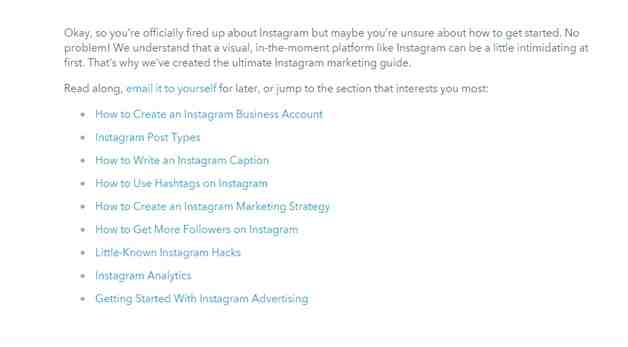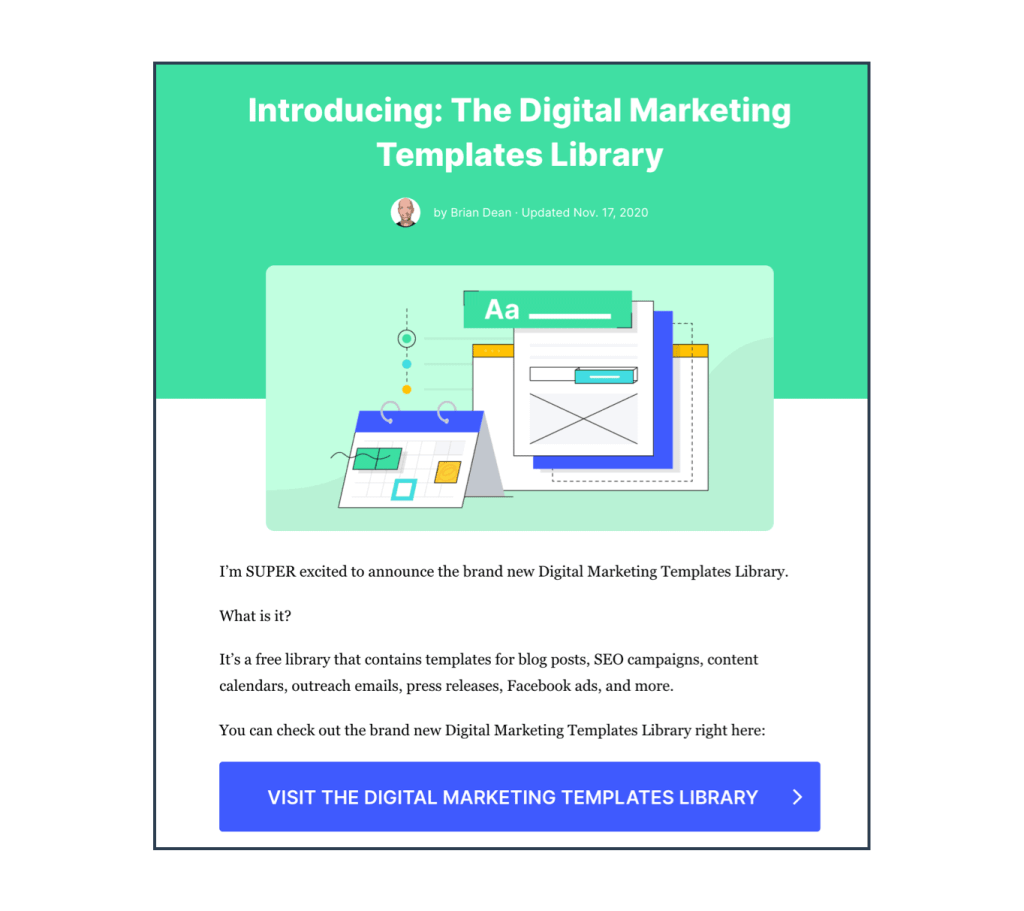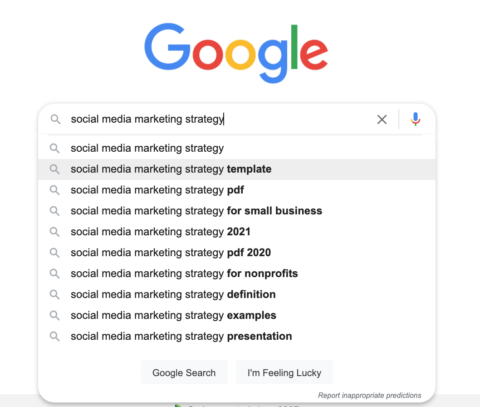If you want to show Google that your pages are both relevant to specific keywords and more authoritative than your competitors, topic clusters are one of the best ways to do this.
This is because Google is no longer looking for keywords on websites when determining rankings.
It looks for synonyms, subtopics, and even answers to frequently asked questions that users have when researching your industry.
As a result, thematic clusters are becoming an increasingly large part of the content strategy of many SEO professionals. They show Google that your site has industry knowledge and a lot of useful, in-depth content on key topics in your industry.
While building thematic clusters on your site takes time, it can help you display your thematic authority in the eyes of Google and your users, increasing your overall keyword rankings and increasing organic traffic over the long term.
Contents
What Are Topic Clusters?

A topic cluster (or content cluster) is a group of content resources on a website that focuses on a related topic.
The content of a topic cluster covers a broader topic with more detail, nuance and detail.
As a unit, a Topic Cluster works to answer all user questions about a specific subject area in your industry niche.
Each thematic cluster is built around a piece of the pillar content (or pillar page). Pillar pages focus on broader subject areas and typically target general industry keywords with more searches.
The accompanying cluster content explores sub-topics or common questions, and typically targets less popular (and less competitive) keywords that have a semantic relationship to the main topic.
Let’s look at a more concrete example. Suppose your company offers resume templates and writing services. One of the pillar content items can be optimized for the keyword “CV writing services” (12,000 per month).
Under the long form pillar content, you will have content targeted at longer but related keywords such as:
Content-wise, these works still fall under the larger umbrella of “resume writing services,” but they are more narrow.
For example, one focuses on the type of CV (ie “CV”) and the other on the type of candidate (ie “Drivers”).
The number of thematic clusters on the website will be determined by the total number of products or services offered by the brand.
The same CV business can create another content cluster around the larger theme of “CV templates” (188,000 per month).
Why Embrace A Content Cluster Strategy?

So why is topic grouping the ideal long-term strategy to get search rankings for broad, parent keywords?
Well, most startup sites have lower domain permissions and simply can’t position themselves for more competitive keyword phrases, even if their content is of high quality.
So, topic clusters can help you rank for less competitive keywords and start generating traffic in no time. After building the authority of your website, you can position yourself for bigger and better keywords.
The SEO goals of thematic clusters are threefold:
How Topic Clusters Help Google Understand Your Site

Thematic clusters not only help Google see your website as authoritative in specific subject areas, but also help Google understand your website’s hierarchy and how your content is related to each other.
In fact, most brands have more than one area of specialization. Thinking about growing your website around these key subject areas (rather than just individual keywords) is a great way to start thinking about grouping your topics.
Let’s take a look at the HR software website.
Screenshot from Paycor.com, October 2021.
Above is an example of a page targeting a high-value keyword: recruiting software.
Screenshots of Ahrefs, October 2021
In all likelihood, the ultimate goal of this brand with its pillar content is to get a 1 page ranking for that high-volume, high-value, search-worthy keyword and overall industry keyword.
As a result, their Pillar content provides a comprehensive, in-depth overview of recruiting software and answers frequently asked questions from users.
The content of the supporting cluster examines related ideas or sub-topics in recruitment in more detail and nuance. Here are some of the blog’s content that strengthens the ‘recruiting’ thematic cluster.
Screenshot from Paycor.com, October 2021.
With all the content focused on recruiting, Google knows that this particular site has the authority in this field.
And since all content links to the home page of the “recruiting software”, Google knows that of all the pages in this cluster, the pillar page is the most important.
How To Build A Topic Cluster

So how do you map your thematic clusters?
Start with the contents of the pillar and build from there.
For example, suppose you run a social media agency. You may have a pillar page that targets the keyword “social media marketing strategy” (SV 1800, CPC $ 15) and provides a general overview of the topic.
You need to do additional keyword research to get started with cluster mapping.
Explore Autocompletes
The most basic way to get your topic cluster ideas is to go to the Google search bar and see what else people are looking for in relation to your pillar content.
Screenshot of a search term [social media marketing strategy], October 2021.
Or Use Your Favorite Keyword Tool
Most keyword suggestion tools help you find related keywords, questions, or auto-complete, and discover potential target keywords for your cluster content.
Screenshots of Ahrefs, October 2021
Screenshot from Ubersuggest, October 2021
Keyword tools can help you more strategically determine what type of content to add to your cluster.
Because even if your cluster content goals are likely to get fewer searches, they should still be meaningful enough to drive some traffic to your site.
They should also have a strong search intention and some conversion potential.
Based on these two small examples, we can identify a few target keywords that will help us build our cluster:
In this scenario, the topic cluster mapping might look something like this:
– & gt; Guide to Social Media Marketing Strategy for Small Businesses (SV 50, KD 63)
– & gt; 15 Examples of Social Media Marketing Strategies in 2021 (SV 50, KD 55)
– & gt; Tips for your B2B social media marketing strategy (SV 20, KD 28)
A thematic cluster should be guided by the content of the pillar. Fewer searches, less competition, but related search intentions are ideal keyword targets for your clustered content.
Once you get keyword rankings for these less competitive keywords with clustered content, Google will begin to see your brand as an authority on the broader subject area of your social media marketing strategy.
Over time, Google will begin promoting pillar pages that target the more popular and competitive keywords in your industry.
The Role of Internal Links in Topic Clusters

So, after creating the pillar content and the cluster content, what do the entire topic cluster have in common?
Your internal link structure helps Google understand a few things:
When you are linking your content, remember that your pillar content must remain at the top of the linking hierarchy.
This underlines Google that of all the content in this cluster, the pillar page is the most important. Therefore, Google should promote this page more often.
While there may be some exceptions, it is important to ensure that your cluster content does not link to pillar pages of other topic clusters.
This practice helps Google understand your website architecture and spread PageRank more effectively across the topic cluster.
Again, the number of thematic clusters you will implement on your site will ultimately be determined by the scope of your services and products.
As you build up your theme clusters, your website will eventually look something like this.
Regardless of the industry, there are probably hundreds or even thousands of ways to search for products and services similar to yours on Google.
So even if your products or services are more limited, you can most likely build a lot of thematic clusters on your website.
Topic Clusters & Keyword Cannibalization
When done correctly, grouping topics should increase the total number of keywords driving traffic to your website.
But when the content of the cluster is not optimized properly or is too similar in terms of subject matter, it can result in keyword cannibalization.
This means that Google does not understand which content in the clusters is the most relevant or the most important.
It is possible that your pillar pages may start to rank for the keywords you targeted in the cluster content, and vice versa.
So, if you notice this result on your own site, please take the following steps to try to fix it:
Understanding The Big Picture Of Topic Clusters
The thematic framework of clusters is an ambitious content strategy.
Ideally, it should last as long as your site exists and until you are done answering every question users may have about your products, services or industry.
If done correctly, your topic clusters will work together to become your most powerful SEO weapon.
In the long run, not only will Google see certain pieces of content as relevant to industry keywords, but it will also view the entire site as a leading industry authority.
Recommended image: Grid graphic / Shutterstock
